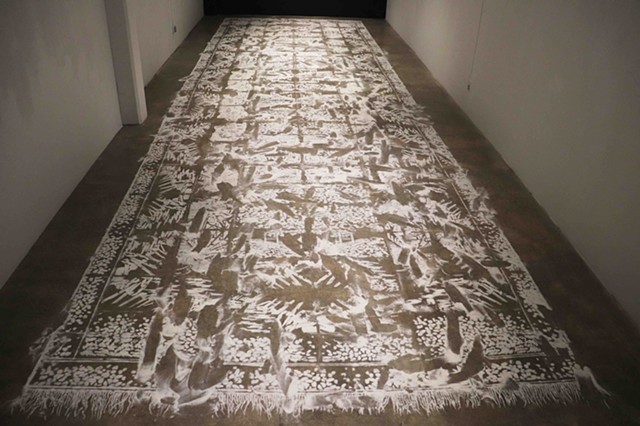DIRT CARPET Project
With Dirt Carpet, Kang presents the latest iteration of her Cotton Research Project Chapter 6 - White Gold. The important history that Kang points to in White Gold is reflectively. In 1793, Eli Whitney
invented the cotton gin, which quickly separated cotton seeds and enhanced production efficiency. Thereafter, the southern United States became a cotton-growing kingdom. A large number of slaves were brought from Africa, until the outbreak of the Civil War. In this
context, using ginning as a metaphor of separating of fiber and seeds evokes the concept of international relations between Taiwan, China, and the USA.
In this exhibition, White Gold recurs as a key throughout the new Dirt Carpet. Its patterns are arranged with the forms of seeds, ginning machine, a shuttle, transportation, a metal steel frame, and other shapes. Those images are responding to each other, as the border and boundary, the soft cotton fiber and the smoke and Pacific Ocean, the metal structures on the sand beach in Kinmen toward to mainland China, etc. The white sand material used in the work echoes the idea of white cotton, the border of land and sea, freedom, and
ethnicity. Textile as a global language: cotton was grown around the world, and textile represents the connection and relationship between cities, countries, and generations. White Gold reveals itself as a landscape of the cotton empire for the unveiling, reckoning with, and
dissecting of globalization and free trade.
The presentation is supported by the cultural exchange project between Siao-Long Cultural Park, Taiwan and COPE NYC, USA.
